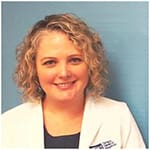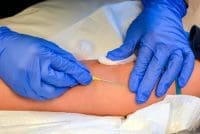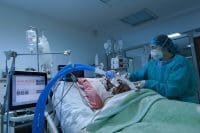Mrs. Anderson is a well-spoken, poised black woman with a flawless face. She is surrounded by silk-encased pillows and is wearing a tasteful dressing grown with a coordinating turban on her head. She is not at all what I was expecting when I entered her room to perform a skin assessment for pressure injury risk. She doesn’t even look like she needs to be in the hospital. But I soon discover why she scored so low on the Braden scale when I ask her to reposition herself in bed.
“I’ve had over a dozen operations.” She tells me. “It is very difficult for me to move because of the pain.” And under her dressing gown I see multiple keloid scars crisscrossing her abdomen. She points out each one and recites each procedure that resulted in the hypo-pigmented, raised cords of tissue. I assist her as she slowly turns to her side to allow me to continue the head-to-toe assessment. I find more keloid scars running up and down her spine.
I complete the survey of Mrs. Anderson’s skin without finding any pressure injuries. But I educate her on the importance of frequent turning and repositioning for prevention of skin breakdown. She looks at me intently as I speak, and when I finish she says, “Can I ask you a personal question?”
“Of course,” I reply, sounding more confident than I feel.
“How did you get your scar?” She asks.
Mrs. Anderson is referring to the healing incision on my neck. “I had part of my thyroid removed a couple of months ago,” I answer.
“Oh, so it was recent?” She asks.
“Fairly recent, yes,” I reply.
“Well, I had an incision in that same spot!” She tilts her chin back indicating that I should take a closer look. I am surprised to find nothing there, especially considering all the keloid scars I visualized just moments ago.
“Really?” I ask incredulously.
“Yes. I had cervical spine surgery and the incision was where yours is now,” She explains. “I was so upset when I found out I was going to have an incision there because I just knew it would leave a keloid scar like all the others. I know that sounds silly.”
“Not at all,” I confide. “I was more upset about the prospect of having a visible scar than I was about having the surgery itself!”
“Vitamin A.” She whispers conspiratorially.
“Really?” I whisper back, playing along.
“Yes,” Mrs. Anderson elaborates, “But you have to get the capsules and squeeze the Vitamin A onto your incision. The topical stuff just isn’t the same,” she winks knowingly.
“Well, thank you so much for sharing your secret with me!” I exclaim. “Seeing you has given me hope for my scar.”
“You are very welcome,” she nods.
“You know, it’s ironic,“ I muse. “I entered your room with the intention of helping you. But I’m pretty sure you helped me more.”
Mrs. Anderson chuckles and, with a smile, says, “I’ll bill you.”
Jennifer J. Brokaw is a wound and ostomy specialist at Tampa General Hospital in Tampa, Florida.


















